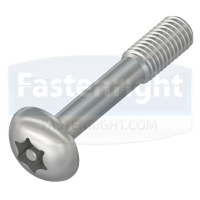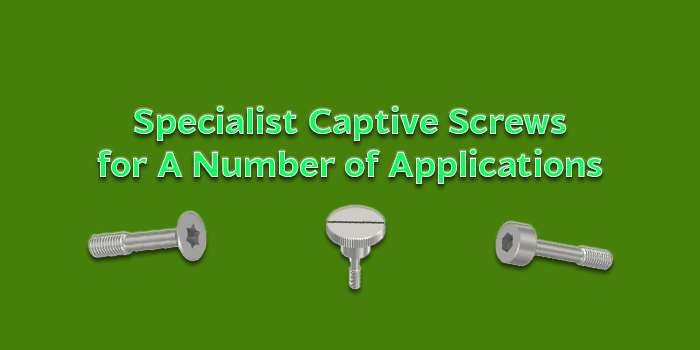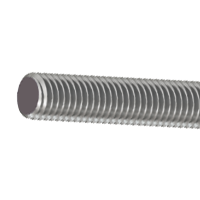Captive Screws are a comprehensive range of products which are categorised by their inability to be fully removed from a hole once they have been installed. They are specially designed to lock into a position within a hole, which is beneficial in applications that need to guarantee that the fasteners are not able to fall out and damage or clog machinery.
They can frequently be found within the manufacturing of furniture, computer cases and other equipment that is produced in large quantities due to their higher safety compared to conventional screws.
There are a number of variants of captive screws which can include things like overlapping screw heads, spring-loaded mechanisms and large grommets – but the most common, and often the most suitable solution is the unthreaded shank and a captive washer. The unthreaded shank is often referred to as a reduced thread and means that a portion of the fastener, generally under the head in the case of a captive screw, is smooth and does not hold a thread.
Applications Where You May Find Captive Screws
Captive screws can be found across a range of applications, but are most often found in highly precise engineering applications and military settings.
In military applications, they are used to meet high standards that require safe and easy access to objects that require repair. Captive screws allow rapid assembly since they can be set-up at various points across an assembly line. They are used in panels relatively often when the panels must be installed, removed and reinstalled quickly and efficiently.
They are required by law in some applications that involve machinery or safety equipment and must be applied to safety guards and other similar equipment so that the application complies with EU Machine Safety Directive 2006/42/EC.
Captive screws are often used within speed assembly and disassembly operations, to prevent damage from loose screws falling into moving parts or electrical circuits.

Captive Screw Types and Head Types
Captive screws are available in a range of distinctive types and head types, including cap heads, pan heads, button heads and even countersunk heads. Each of the different head styles allows for different uses within applications – for example a countersunk head captive screw will sit flush in its housing hole, possibly creating a more aesthetically pleasing finish.
The style of drive is also a significant factor – and there a variety of these too.
There are Pozi drive captive screws, which offer improved torque and resistance to cam-out, and their predecessor, the Phillips Head. There are also Torx and Pin Torx head styles (pictured above), Pozi drive captive screws, and Hex style too.
Outside of the expected captive screw type, with a reduced thread under the head, there are also captive thumb screws, which come in three differing DIN standards – DIN 653, DIN 465 and DIN 464.
Captive Screw Manufacturing and Materials
There are critical factors to consider within the manufacturing of captive screws. The standard of manufacturing must be high, due to the necessary efficiency of the unthreaded section of the screw – if there are issues with the reduced thread then there will be issues within the screws ease of use or the application they are placed in.
A number of the captive screws, for example, the thumb screws, are operated by hand and consequently require a distinct lack of sharp edges as not to cause injury.
Of course, the above reasons, and more, are why all of the captive screws are manufactured to tight thresholds and are well-finished.
The most prevalent material choices are Aluminium and Brass, but these screws can be made to order in a wide range of materials and finishes, such as A2 stainless for corrosion resistance, or A4 stainless for prolonged exposure to water or moisture. Optional thread locking patches are also available on all of the captive screw range.
See captive screw products HERE
Special or Custom Captive Screws
Captive screws are available from stock in standard sizes and diameters ranging from M1.4 to M12 and lengths ranging from 6mm to 300mm. They can also be manufactured in imperial sizes, with both UNF and UNC threads available.
Special or custom screws can be made to order, allowing a high degree of customisability in the design process. Non-standard dimensions, lengths and more are available on request.



